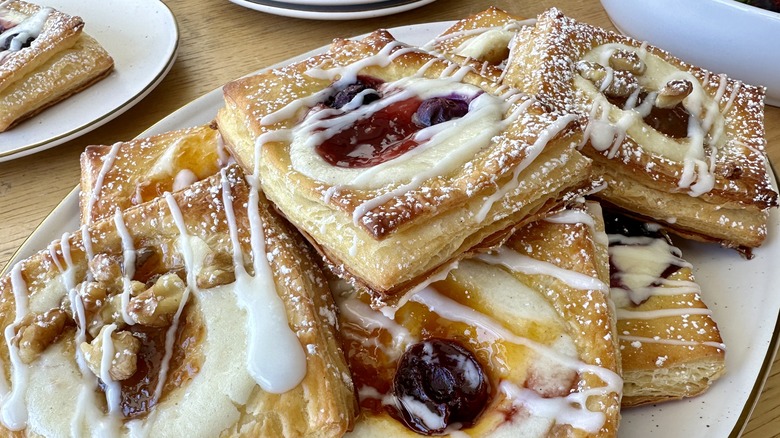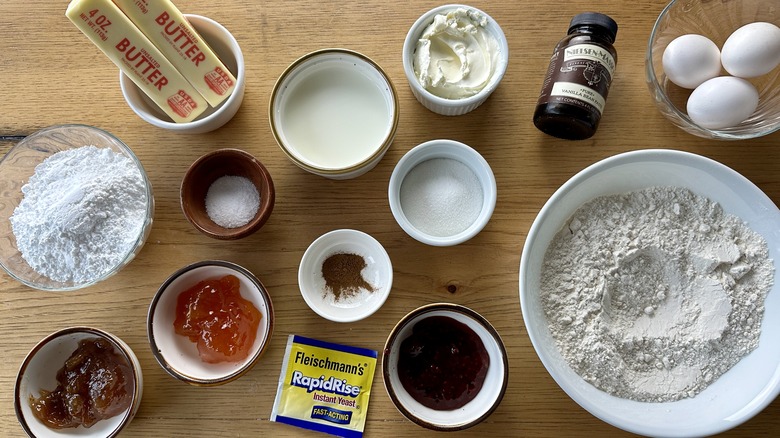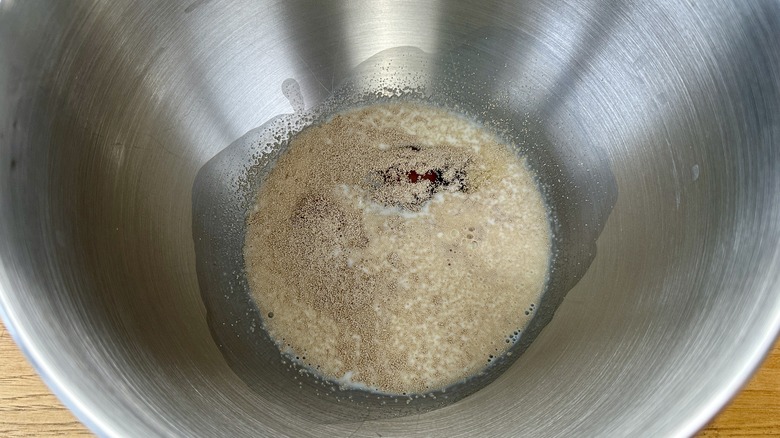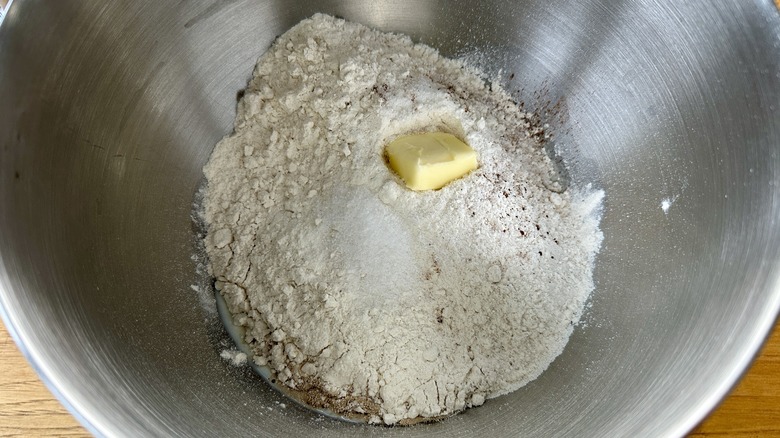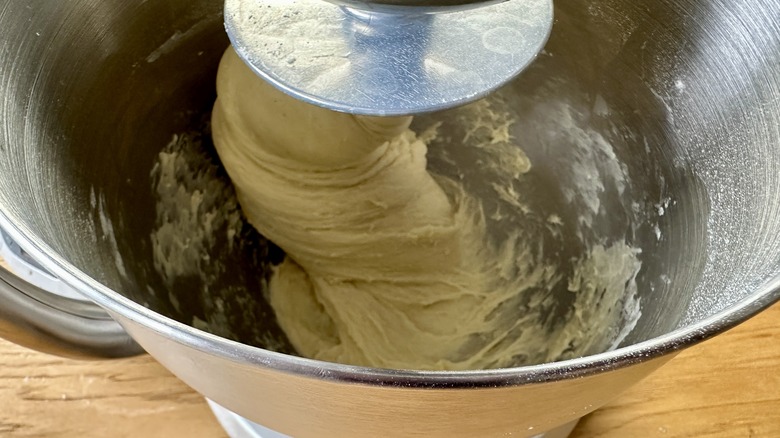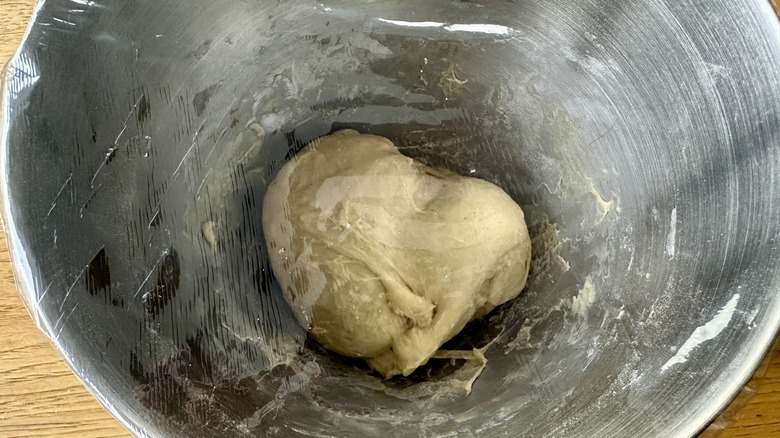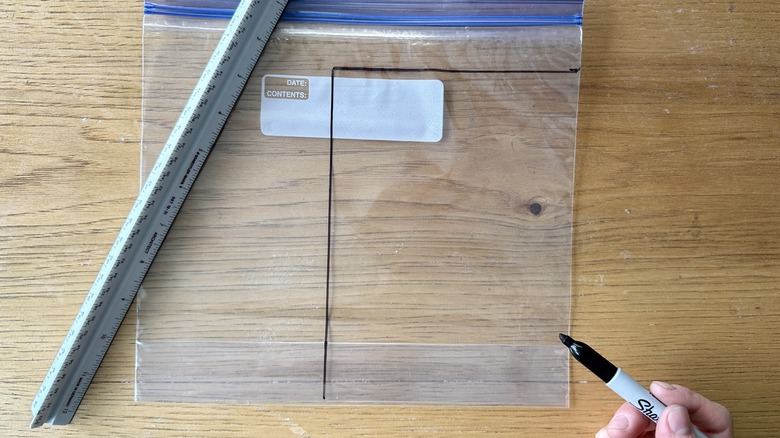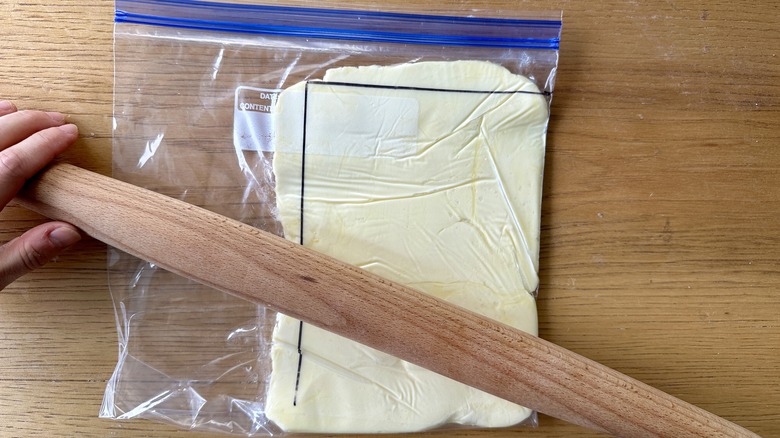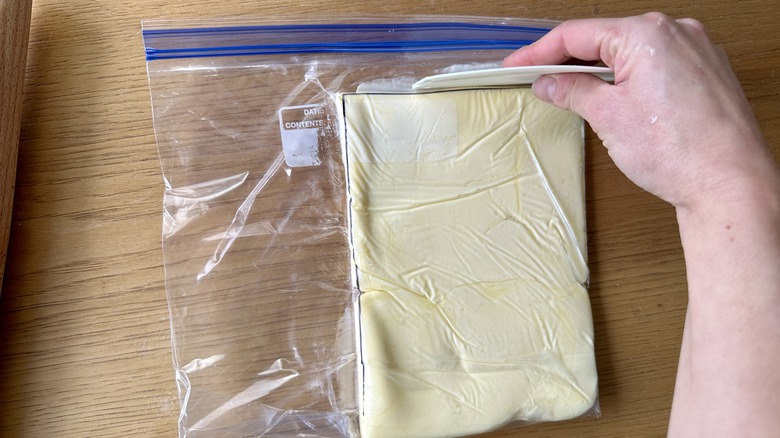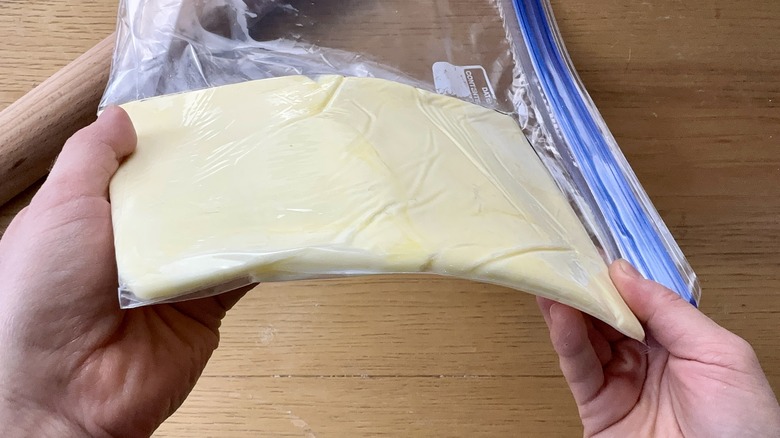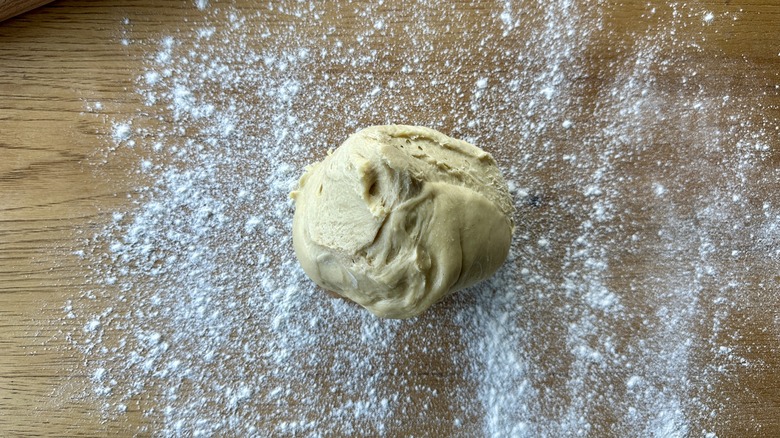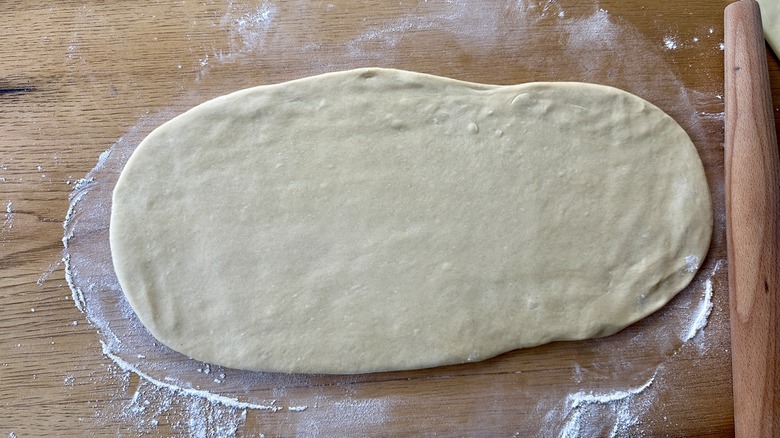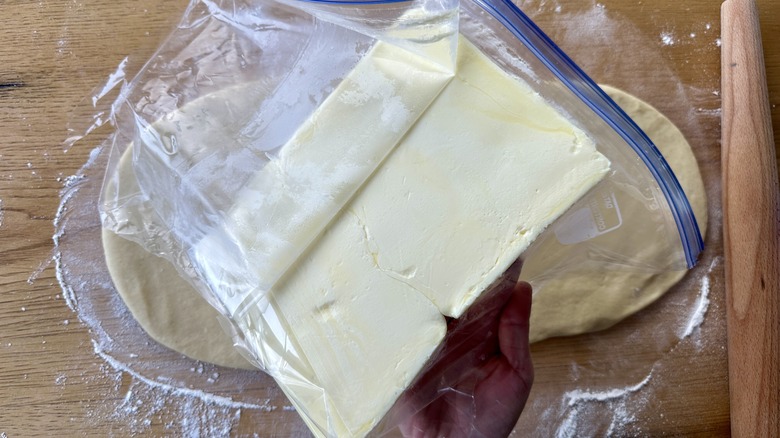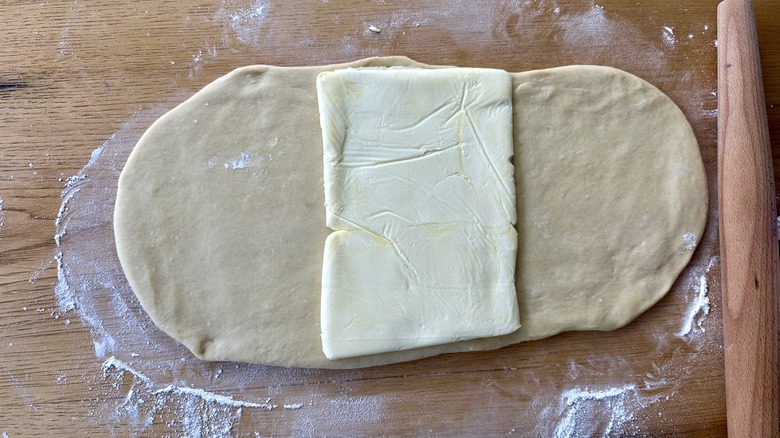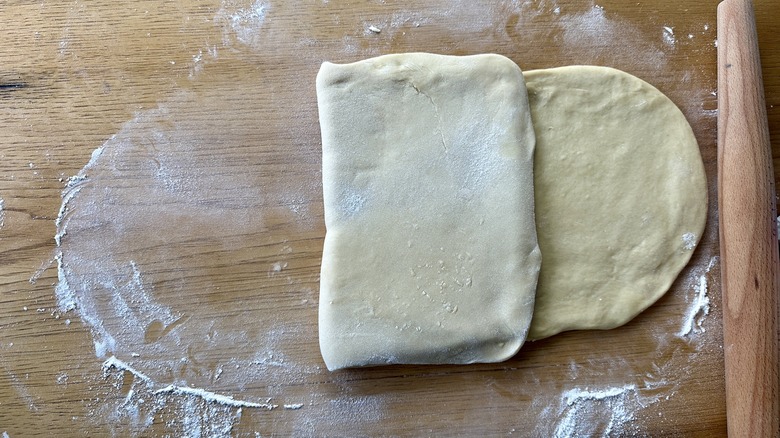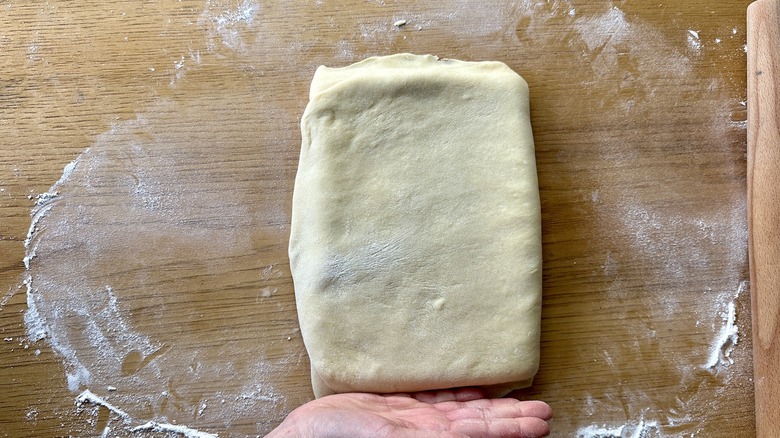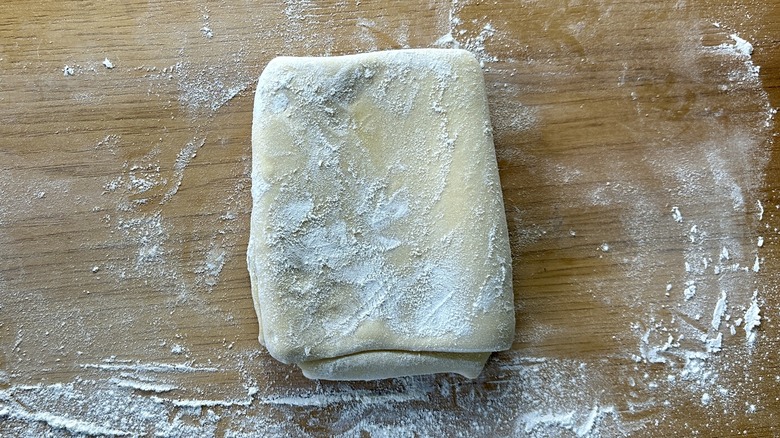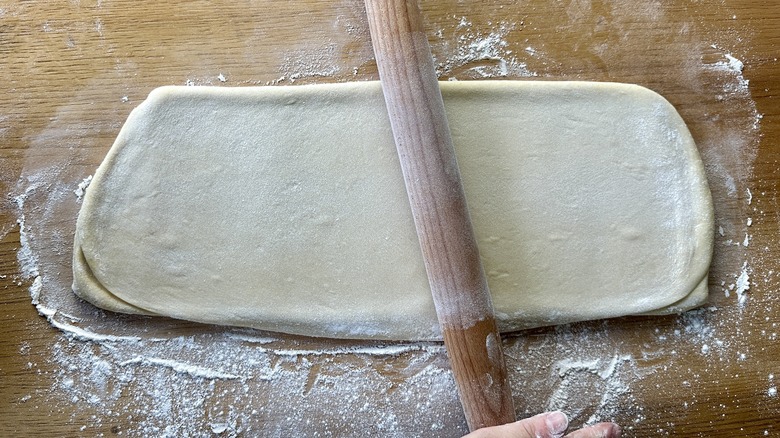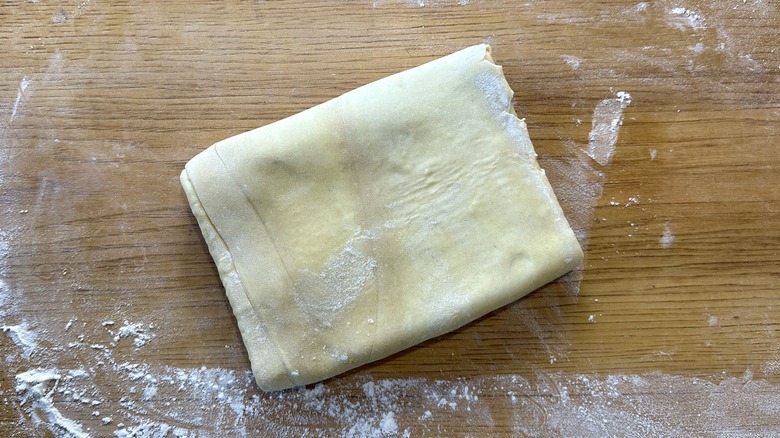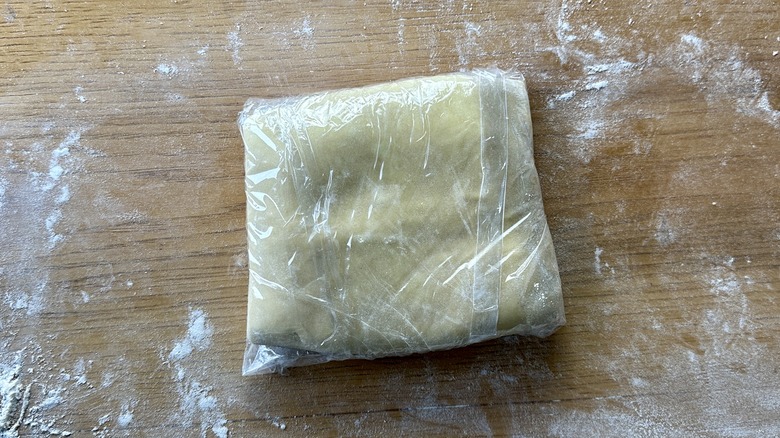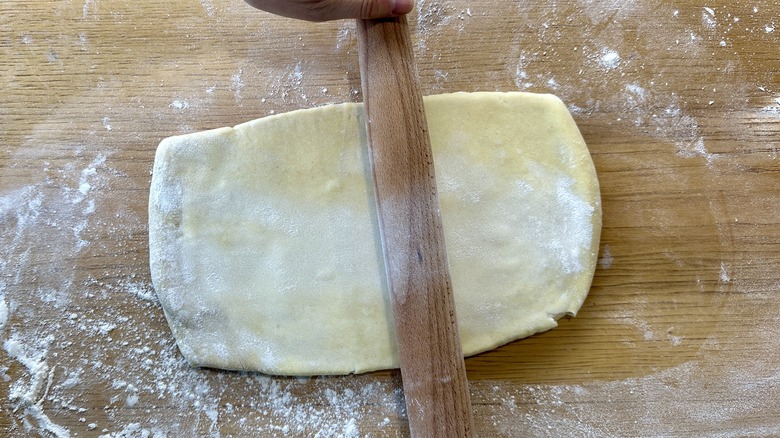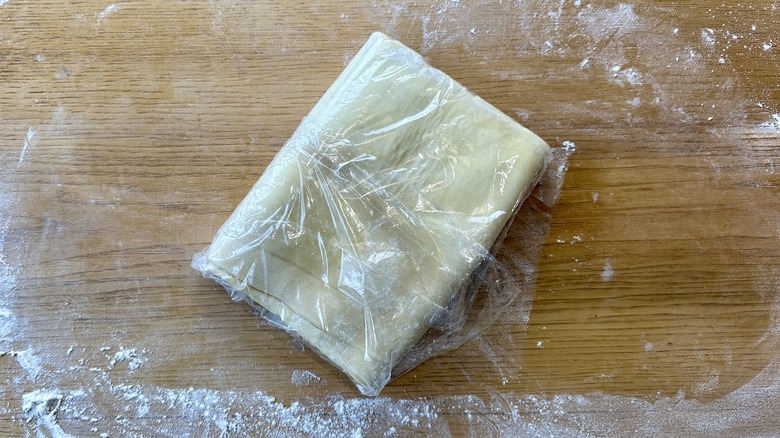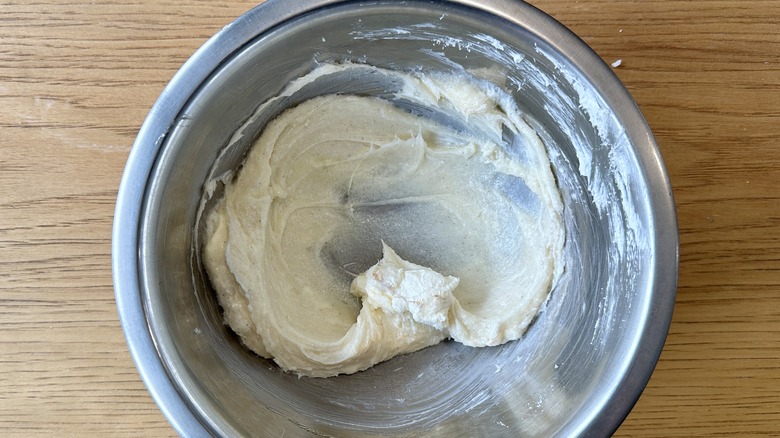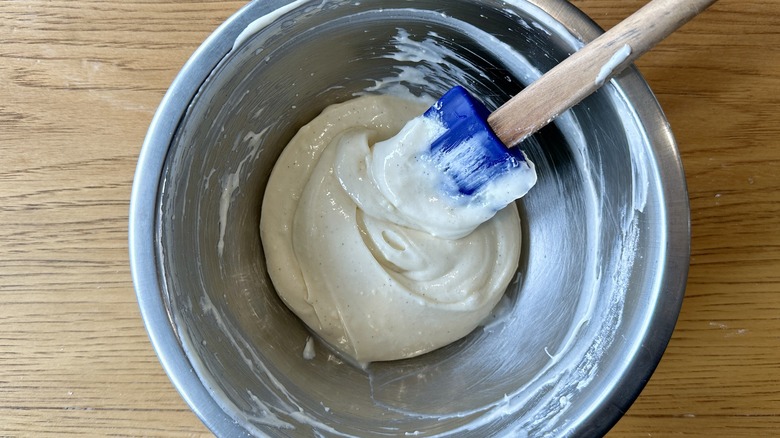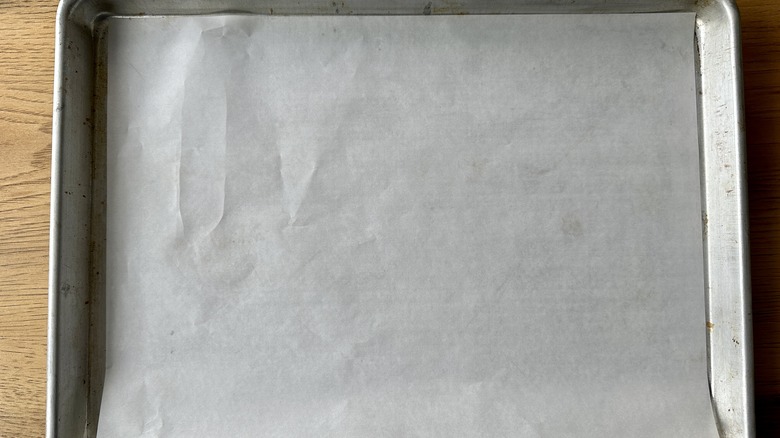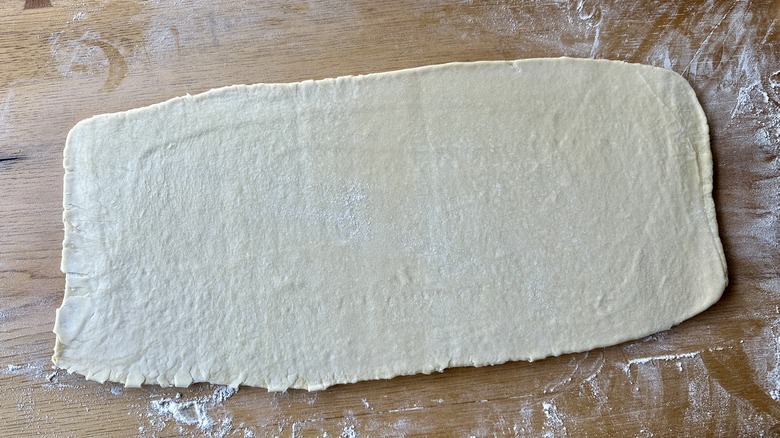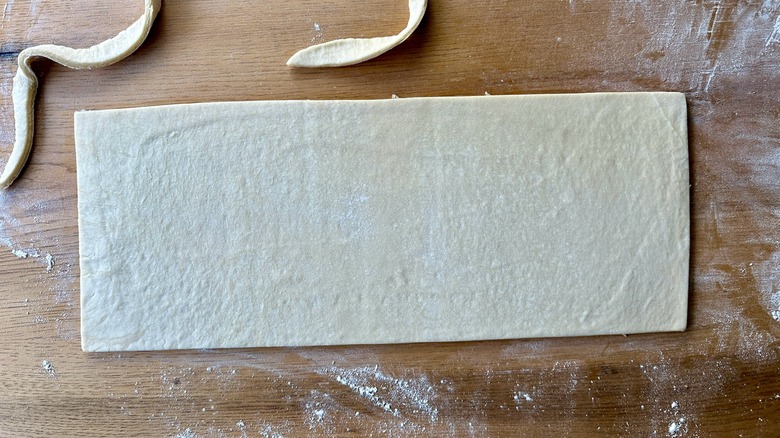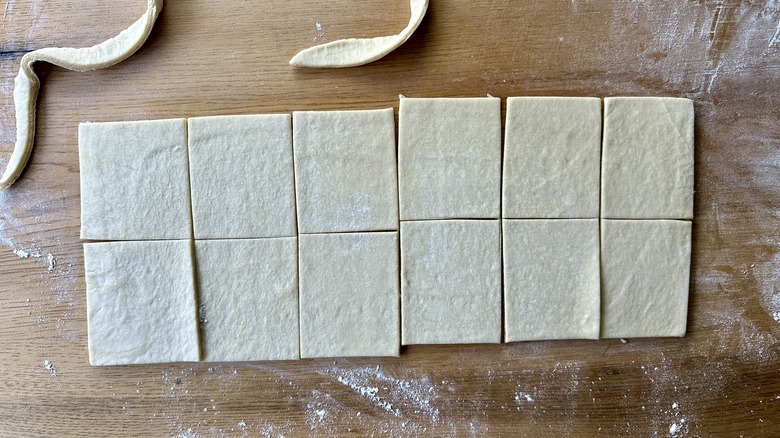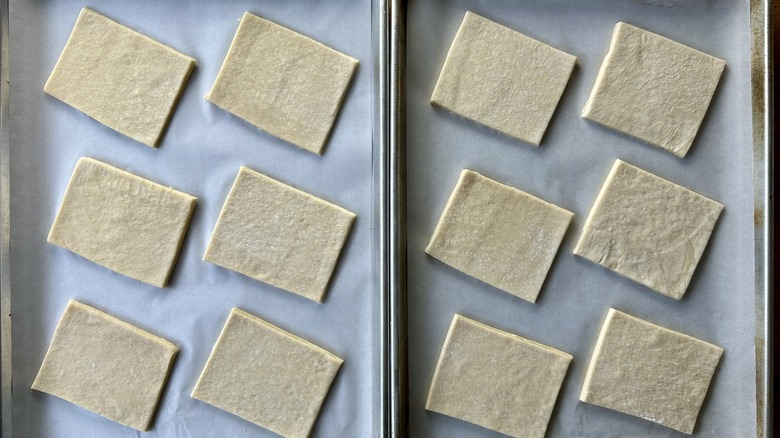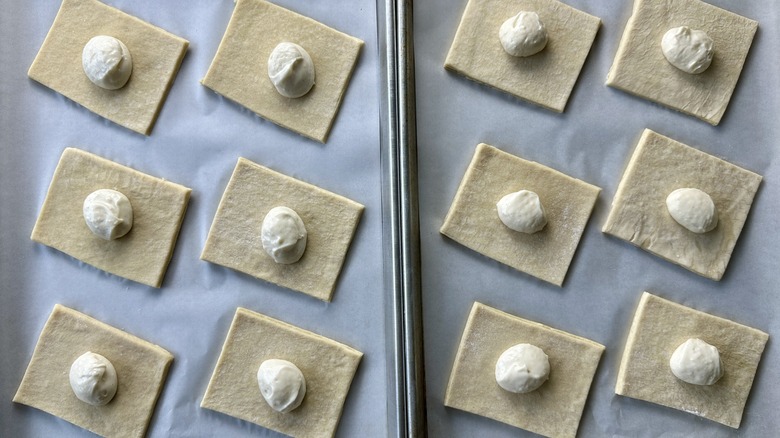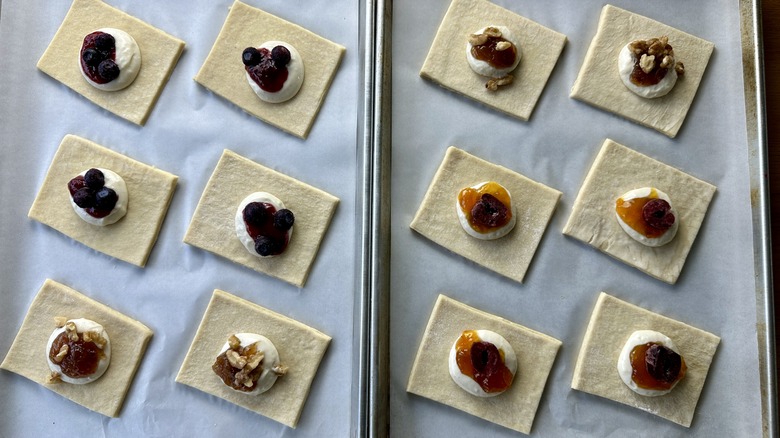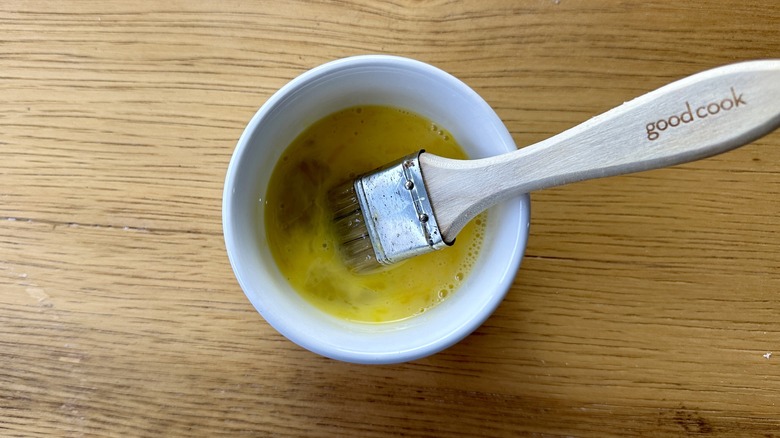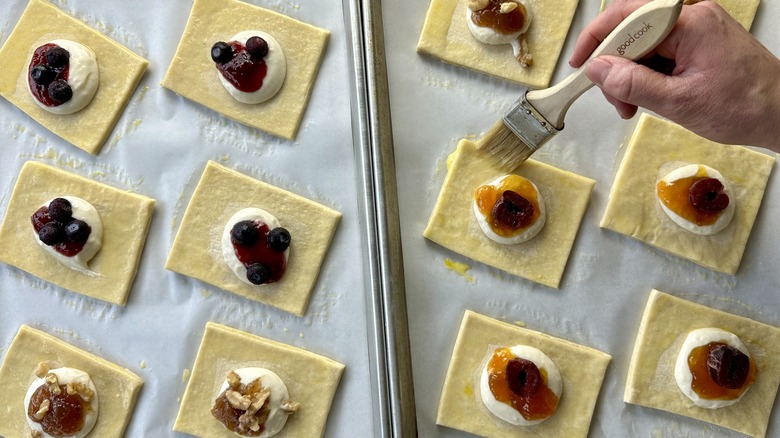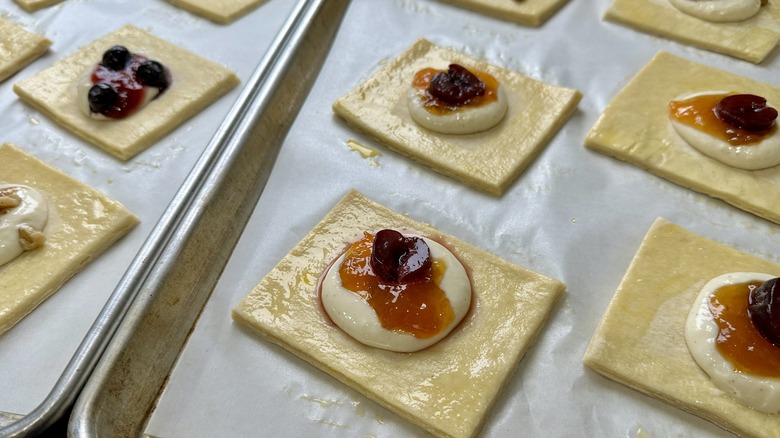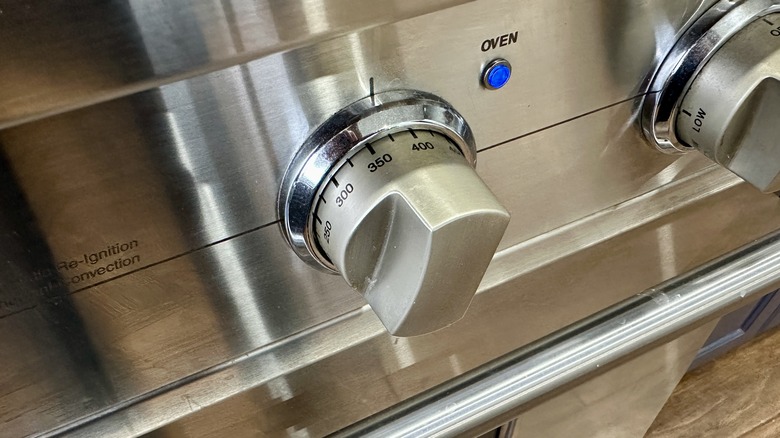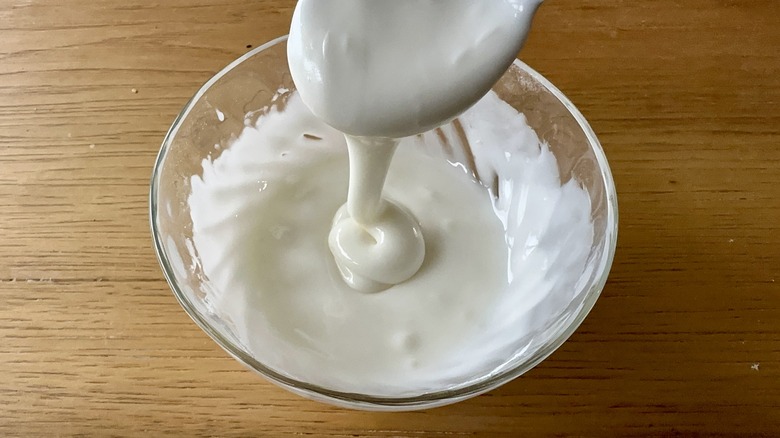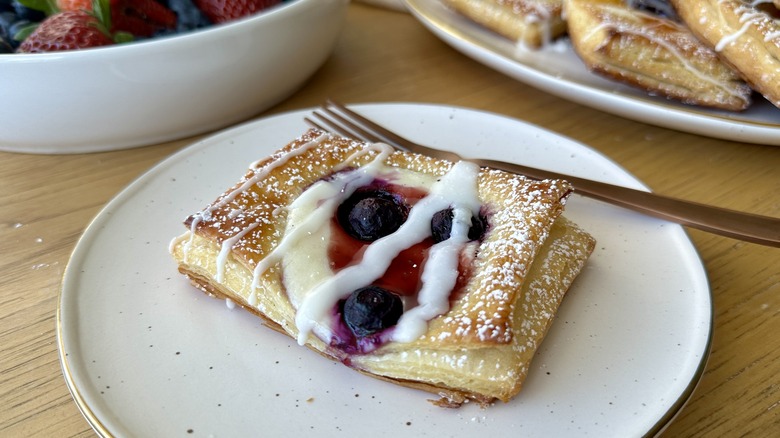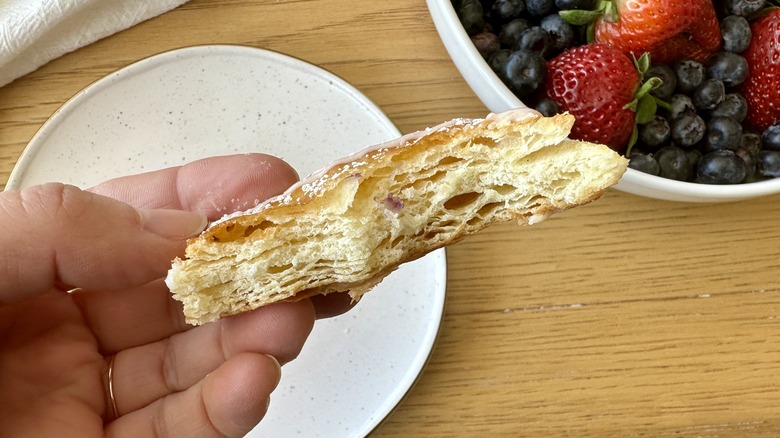Cream Cheese And Assorted Fruit Danishes Recipe
It might require patience, but nothing beats a pastry made from scratch. Tasting Table recipe developer Katie Rosenhouse shares these cream cheese and assorted fruit danishes that will reward you for the effort you put into them. You'll need to carve out some time to make them, but they're notably flakier and fresher than anything from a package. Rosenhouse assures us that, "Danishes are a labor of love, but so worth it. Once you master making this dough, you'll never go back to the store-bought version."
This recipe requires several steps, including chilling and folding the dough at a few intervals. It might seem overwhelming at first, so Rosenhouse recommends, "Remember to take this recipe one step at a time. I love to choose a rainy day when I know we'll all be at home — you can complete the folds at your leisure throughout the day without feeling rushed." Once your pastries are baked to a golden finish, she suggests serving them as the perfect centerpiece for a brunch gathering. If you mix up a batch of different kinds, topped with a variety of fruit and nut toppings, "Everyone can grab their favorite! Serve with all of your classic brunch favorites — eggs, bacon, fruit salad, and more."
Gather the ingredients for cream cheese and assorted fruit danishes
To make the danishes, you'll need a package of instant yeast, whole milk, large eggs, granulated sugar, all-purpose flour, kosher salt, ground cinnamon, and softened unsalted butter. For the filling and garnish, get a package of cream cheese (softened), vanilla extract, jam or preserves (assorted flavors), confectioners' sugar, and either water or milk. If desired, you can use assorted nuts and fresh or frozen fruit in the filling.
Step 1: Combine the yeast, milk, egg, and sugar
In the bowl of a stand mixer fitted with a hook attachment, stir to combine yeast, milk, 1 large egg, 1 large egg yolk (reserve egg white), and ¼ cup granulated sugar.
Step 2: Add the flour, salt, cinnamon, and butter
Add 3 ¼ cups all-purpose flour, 1 ½ teaspoons kosher salt, ⅛ teaspoon ground cinnamon, and 1 tablespoon unsalted butter.
Step 3: Knead the dough
On low to medium speed, knead the dough for 6 to 8 minutes until sticky but smooth.
Step 4: Cover the dough
Remove the bowl from the mixer, cover with plastic wrap, and set aside.
Step 5: Mark a plastic bag
Use a marker to mark a 6- x 8-inch rectangle on the outside of a gallon-size zip-top bag.
Step 6: Flatten the butter
Place the remaining butter into the bag and roll or press to evenly fill the marked rectangle.
Step 7: Shape the butter
Use a bench scraper or your hands to push any excess butter back within the lines.
Step 8: Chill the butter
Chill about 15 minutes, until firm but pliable.
Step 9: Place the dough on a floured surface
Transfer the dough to a floured surface.
Step 10: Roll the dough
Roll the dough to a rough 9- x 18-inch rectangle.
Step 11: Unwrap the butter
Cut open the zip-top bag and unwrap the butter.
Step 12: Place the butter on the dough
Place the butter on the center of the rolled dough.
Step 13: Fold the dough
Fold the bottom section of dough over the butter, then top with the top section of dough.
Step 14: Seal the ends
Pinch the ends to seal.
Step 15: Flip the dough
Flip the dough so the seam is on the bottom and the short end is parallel to you.
Step 16: Roll the dough again
Roll gently and evenly, only rolling away and toward you (not from side to side), to reach an approximate 6- x 18-inch rectangle.
Step 17: Repeat the folding process
Repeat the folding process, folding the bottom third of the dough over the center and the top third over the top.
Step 18: Wrap and chill the dough
Wrap dough with plastic wrap and chill for 30 minutes.
Step 19: Repeat the folding process twice more
Repeat the rolling and folding process twice more. If the dough is easy to work with, roll and fold two times in a row. If it's shrinking back or becoming warm or sticky, roll and fold one time, then wrap and chill for an additional 30 minutes before completing the last round.
Step 20: Chill the dough
Wrap and chill dough for at least 2 hours or overnight.
Step 21: Start the cream cheese mixture
Stir to combine the cream cheese, remaining ¼ cup sugar, 1 tablespoon flour, ¼ teaspoon salt, and ⅛ teaspoon cinnamon until smooth.
Step 22: Add egg white and vanilla
Stir in the reserved egg white and vanilla until smooth. Chill until ready to use.
Step 23: Prep baking sheets
Line two baking sheets with parchment paper.
Step 24: Roll the dough again
Roll the dough on a floured surface to a ¼-inch thickness.
Step 25: Trim excess dough
Trim the edges if needed.
Step 26: Cut out desired shapes
Cut out 3- or 4-inch squares, rectangles, circles, or any shapes you prefer.
Step 27: Place the shapes on baking sheets
Transfer the shapes to the prepared baking sheets, spacing them at least ½-inch apart.
Step 28: Top with cheese filling
Place a scant tablespoon of filling in the center of each.
Step 29: Add jam and garnishes
Top the filling with a spoonful of jam. Finish with any desired toppings, including fresh or frozen fruits, nuts, and more.
Step 30: Whisk an egg
Whisk the remaining egg with a splash of water or milk.
Step 31: Brush with egg wash
Brush the egg wash over the edges of the danishes, avoiding touching the filling.
Step 32: Let the danishes rest
Set the baking sheets aside for 30 minutes or until the danishes are slightly puffed in size.
Step 33: Preheat the oven
Preheat the oven to 375 F.
Step 34: Bake the Danishes
Bake the danishes for 18 to 20 minutes until golden brown.
Step 35: Assemble the Danishes
Combine the danishes onto one baking sheet and set aside.
Step 36: Prepare the glaze
Stir to combine the confectioners' sugar and water or milk until smooth. Add additional water or milk as needed to reach a pourable consistency.
Step 37: Glaze the danishes
Drizzle glaze over the warm danishes.
Step 38: Serve the Danishes
Dust the danishes with additional confectioners' sugar, if desired, before serving.
What possible variations are there for fruit danishes?
Danishes are the perfect canvas for customization, and Katie Rosenhouse encourages bakers to have fun with these. Her recipe calls for jam or preserves, which you can choose depending on your preference and mix and match with a variety of toppings, including fresh or frozen fruits, nuts, and shredded coconut. Try apricot jam with toasted almonds, raspberry with a scattering of coconut, or fig preserves with chopped walnuts. For a recipe this special you might even want to make your own homemade strawberry jam.
As for the cream cheese filling, Rosenhouse notes, "You can substitute part of the cream cheese with ricotta, farmer's cheese, or mascarpone for a unique touch." Meanwhile, aside from cinnamon, you can add a sprinkle of other spices, citrus zest, or flavored extracts. If you're making an assorted batch she suggests, "Fill some of the danishes with lemon curd or Nutella instead."
Even the dough itself can be prepared and shaped in different ways. Rosenhouse suggests, "It can be rolled out and turned into bear claws, fruit-filled danishes, a braided pastry, savory pinwheels, cinnamon-raisin Danish swirls, and more."
Are Danishes made with puff pastry dough?
Though the dough used to make Danishes is similar to puff pastry, they have some distinct differences. Katie Rosenhouse explains, "Both are laminated doughs, meaning the dough is layered with butter during a process called lamination, resulting in flaky and airy layers once the dough is baked and those layers of butter turn to steam."
Although the results and uses are similar, she distinguishes between the two. "Danish dough is a yeast-based dough typically made with milk, eggs, and sugar in the mix. That dough is then layered with a butter block, and folded and rolled to create flaky layers. The texture after baking is soft, flaky, and tender." The result is a moist layered dough that's a perfect complement to the tangy cheese and sweet preserves in these Danishes. Rosenhouse notes that the dough is similar to that used in a croissant recipe.
On the other hand, "Puff pastry is made with only flour, water, salt, and butter. While the dough is also laminated with butter, the lack of sugar, eggs, or milk results in a much crispier, flakier dough that can be used for savory or sweet recipes." In a pinch, you can try the somewhat easier rough puff pastry, which doesn't require lamination. Instead, cold butter is mixed into the flour, which yields a flaky result that's not quite as precise or layered as classic puff pastry.
Cream Cheese and Assorted Fruit Danishes Recipe
Pretty, customizable, and delicious, it takes a few steps to make these cream cheese and assorted fruit Danishes, but they're definitely worth the effort.

Ingredients
- 1 (.25-ounce) package instant yeast
- ¾ cup whole milk
- 3 large eggs, divided
- ½ cup granulated sugar, divided
- 3 ¼ cups + 1 tablespoon all-purpose flour, plus additional for rolling
- 1 ¾ teaspoons kosher salt, divided
- ¼ teaspoon ground cinnamon, divided
- 1 cup unsalted butter, softened, divided
- ½ (8-ounce) package cream cheese, softened
- ½ teaspoon vanilla extract
- ¾ cup jam or preserves (assorted flavors)
- ¾ cup confectioners' sugar
- 1 tablespoon water or milk
Optional Ingredients
- Nuts, fresh or frozen fruits, or any other toppings, as desired
- Confectioners' sugar, for dusting
Directions
- In the bowl of a stand mixer fitted with a hook attachment, stir to combine yeast, milk, 1 large egg, 1 large egg yolk (reserve egg white), and ¼ cup granulated sugar.
- Add 3 ¼ cups all-purpose flour, 1 ½ teaspoons kosher salt, ⅛ teaspoon ground cinnamon, and 1 tablespoon unsalted butter.
- On low to medium speed, knead the dough for 6 to 8 minutes until sticky but smooth.
- Remove the bowl from the mixer, cover with plastic wrap, and set aside.
- Use a marker to mark a 6- x 8-inch rectangle on the outside of a gallon-size zip-top bag.
- Place the remaining butter into the bag and roll or press to evenly fill the marked rectangle.
- Use a bench scraper or your hands to push any excess butter back within the lines.
- Chill about 15 minutes, until firm but pliable.
- Transfer the dough to a floured surface.
- Roll the dough to a rough 9- x 18-inch rectangle.
- Cut open the zip-top bag and unwrap the butter.
- Place the butter on the center of the rolled dough.
- Fold the bottom section of dough over the butter, then top with the top section of dough.
- Pinch the ends to seal.
- Flip the dough so the seam is on the bottom and the short end is parallel to you.
- Roll gently and evenly, only rolling away and toward you (not from side to side), to reach an approximate 6- x 18-inch rectangle.
- Repeat the folding process, folding the bottom third of the dough over the center and the top third over the top.
- Wrap dough with plastic wrap and chill for 30 minutes.
- Repeat the rolling and folding process twice more. If the dough is easy to work with, roll and fold two times in a row. If it's shrinking back or becoming warm or sticky, roll and fold one time, then wrap and chill for an additional 30 minutes before completing the last round.
- Wrap and chill dough for at least 2 hours or overnight.
- Stir to combine the cream cheese, remaining ¼ cup sugar, 1 tablespoon flour, ¼ teaspoon salt, and ⅛ teaspoon cinnamon until smooth.
- Stir in the reserved egg white and vanilla until smooth. Chill until ready to use.
- Line two baking sheets with parchment paper.
- Roll the dough on a floured surface to a ¼-inch thickness.
- Trim the edges if needed.
- Cut out 3- or 4-inch squares, rectangles, circles, or any shapes you prefer.
- Transfer the shapes to the prepared baking sheets, spacing them at least ½-inch apart.
- Place a scant tablespoon of filling in the center of each.
- Top the filling with a spoonful of jam. Finish with any desired toppings, including fresh or frozen fruits, nuts, and more.
- Whisk the remaining egg with a splash of water or milk.
- Brush the egg wash over the edges of the danishes, avoiding touching the filling.
- Set the baking sheets aside for 30 minutes or until the danishes are slightly puffed in size.
- Preheat the oven to 375 F.
- Bake the danishes for 18 to 20 minutes until golden brown.
- Combine the danishes onto one baking sheet and set aside.
- Stir to combine the confectioners' sugar and water or milk until smooth. Add additional water or milk as needed to reach a pourable consistency.
- Drizzle glaze over the warm danishes.
- Dust the danishes with additional confectioners' sugar, if desired, before serving.
